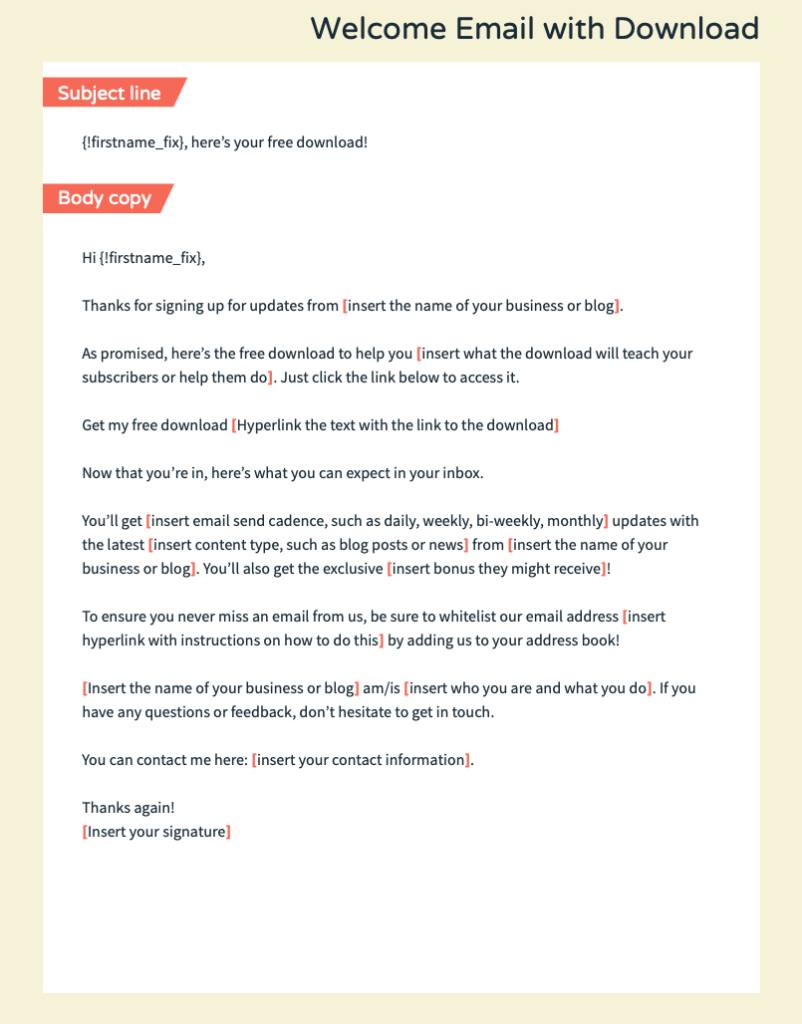9 Best Practices for Writing Emails: Get Mileage Out of Your Emails
By Kelly Forst August 10, 2021
Email is one of the best tools you have for convincing and converting your leads.
But, if you aren’t following best practices for writing emails, you can quickly find your content is considered spam and largely ignored.
Think about your own inbox.
How many emails are you giving a second glance because of a creative subject line?
How many unsolicited brand emails are you opening?
What is driving you to open them?
More than likely, it all comes down to the value you think you will get from them.
The average click-to-open rate for emails in the US is 15.71%.
You can get people interested in your copy by following these tips to write stronger emails.
Email copywriting best practices
If you are wondering how to write an email, just know: there is a method to the madness when it comes to improving your email marketing rates!
It might feel like stabbing in the dark, but there are tried and true ways to improve your email engagement numbers.
Great email campaigns come from marketers who are experienced, organized and knowledgeable. This requires an understanding of how the following current trends all work together.
These unspoken email rules for how to write a marketing email will have a major impact on audience perception.
Start with a template or copywriting formula
Emails should be consistent. You might have different templates for different types of emails, but everything should flow for a cohesive brand feel.
Templates also help push you to include key visual elements, like banners, CTA buttons and images.
Plus, email templates — like the one below — can give you an idea of what to write when you feel stuck.

Copywriting formulas are also a great place to turn when you need a helping hand. Many of the world’s best copywriters turn to formulas to guide their own writing.
Write naturally and follow your brand voice
Another best practice in email copy is writing in the same way you talk. People want to hear your brand voice, not feel like they are reading a book or article.
This is a great opportunity to develop your brand voice and really hone in on your approach. Will you be trendy? Serious? Creative? Stoic?
How you sound will help the audience form a bond with your brand that goes beyond a great price or product. It will help create connections and trust.
Segment contacts to target a specific audience
A huge mistake would be trying to write to your whole audience at the same time.
There is a common saying: “You can’t be all things to all people.”
So, stop trying to be!
Use your contact list information to help you segment your lists. Some of the key defining features might include:
- Location
- Past purchases
- Recent activity
- Demographic
- Gender
- Age
- Abandoned cart
- Loyalty
- Point in buyer’s journey
For every email, focus on writing to one person. Then, only send it to the audience segments that will find it relevant.
That’s a big trick—to ONLY send it to the leads it is written for.
You may find yourself compelled to share with everyone “just in case.” But, sending out irrelevant emails is a little bit like playing the boy who cried wolf.
If you keep jumping into inboxes and demanding attention when the offer doesn’t really apply, people are going to write you off and ignore the emails you do write for them.
Use short, punchy subject lines
You don’t want clickbait that looks desperate and obnoxious. But, don’t linger on your thoughts in your subject line.
Create punch and energy so users realize you aren’t wasting their time.
Spend a lot of time crafting a powerful subject line and make sure your headers are aligned, using similar language to indicate you aren’t trying to perform a bait-and-switch for your audience.
If they click to open it, you need to deliver on the promise that made your readers open in the first place.
Focus on your customer
Your brand cannot be the focus of the campaigns or you will totally lose your subscribers’ interest.
Avoid “you” language. Instead, use “me” and “we” to indicate the camaraderie you have with your customers. Emails aren’t really a place to offer step-by-step instructional content.
Add personalized elements
There is nothing easier to ignore than a generic sales email.
One way to break through the noise and stand out is by personalizing your emails.
One part of this comes down to successfully segmenting your email lists so users are more likely to care about the content they are receiving. And the numbers prove that segmentation works:
- Statistics show that personalized subject lines can increase open rates by 50%.
- Segmented email marketing campaigns are able to increase revenue by as much as 760%.
Avoid spammy words
There are certain words that make your emails look desperate, manipulative or brand-centric. These spammy words are likely to get you ignored.
Examples of spammy words to avoid:
- Apply online
- Click here
- Drastically reduced
- Exclusive deal
- Limited time
- Best seller
- Bargain
- Great offer
- Deal
- Cheap
- No obligation
- Winner
Instead, give these 8 powerful words a try in your next email.
Include a clear call to action (CTA)
Without clear direction, users are less likely to complete a specific outcome.
What is the point of an email if they read it and then back out to check the next one?
Think about the action you want your readers to take.
Sales isn’t always the right push. You need to have an idea about where leads are at in their buyer’s journey and what kind of action would help them take the best next step.
While you have them captive, showcase the value and then make the call to action.
If your audience finds the content relevant and believes your copy, they will be much more likely to complete the desired action.
- Only choose one CTA for clarity
- Avoid spammy language for the CTA
- Design a button so it takes visual precedence
- Choose value that matters to your audience
- Include the CTA button near the top AND bottom
- Track and measure the impact of your CTA
Keep it mobile friendly
Mobile is the top method for checking email.
85% of email recipients use smartphones to access email.
If your email isn’t designed for mobile, then you are driving away a huge part of your audience.
This means keeping text segments short, using responsive design templates and writing for an audience that is on the go.
Show your audience you are respecting their time.
- Paragraphs should only be 1-3 sentences long for smaller device screens.
- Images and video are more likely to grab attention than text-heavy emails.
- All CTAs and links should lead to responsive design landing pages.
Bonus tip: know grammar. Then break the rules.
You don’t want an email filled with grammar accidents, like mistaking “your” for “you’re” or writing run-on sentences. However, once you understand the rules, you will find there are ways you can break them for dramatic effect.
You are the boss.
Short sentences and informal language (like starting a sentence with “but”) are examples of how people break the rules.
While it may seem like the opposite of a best practice for writing emails, breaking the rules is sometimes the best way to write surprising, captivating copy.
Stay up-to-date with email trends
Things are moving fast. Don’t stop learning about the industry changes and expectations.
Just when you think you’ve got the best email practices under your belt, your target will have to shift a bit because of new marketing tools or audience expectations.
Sign up for the AWeber blog newsletter and we promise to provide you with regular industry trend updates and actionable tips for improving your campaigns!
 87% off ends soon!
87% off ends soon! 
